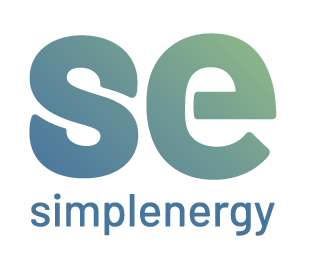Today is a day for energy professionals like me to focus and reflect on what is happening in the world around us regarding energy efficiency. It would be easy to get depressed with the bombardment of bad news that has characterized 2020. I will resist the urge to chime in with yet another rant on current politics, and instead call your attention to some good things happening despite the opposing forces. In the USA, our Federal government has been backing away from policies intended to progress us toward a cleaner energy future, but what really matters is what happens locally, and there is a lot there that should encourage us. The American Council for an Energy Efficient Economy (ACEEE) has recently updated their City Clean Energy Scorecard, and examining that report will show you a number of municipalities that are actively changing the landscape for a cleaner, greener future.
Why is this valuable? Well, according to the International Energy Agency, 2/3 of the world’s energy demand and 70% of carbon emissions occurs in cities. That shouldn’t surprise anyone; the UN tells us that today, 55% of the world’s population lives in cities, and that number will go up. I didn’t look for a number, but surely a larger percentage than 55% of economic activity occurs in cities. So, what happens in cities has the potential to dramatically change the environmental and health outcomes for everyone. And municipal governments have power to enact policies with immediate impact down to the level of individual buildings, homes and businesses.
The City Clean Energy Scorecard looks at the top 100 metropolitan areas based on population and assigns each of them a score in five different policy areas, with a total potential score of 100. The policy areas are:
- Local government operations: city government, procurement and asset management
- Community-wide initiatives: metrics, goals and engagement strategies to improve energy use and emissions
- Buildings policies: building codes and compliance strategies
- Energy and water utilities: involvement of the supply network for energy and water
- Transportation policies: strategies for reduction of vehicle fuel consumption and emissions
Here are some examples of city programs that earned high marks:
- New York City took the top spot on the scorecard this year. A key action was adopting a law that sets greenhouse-gas (GHG) emissions caps for buildings larger than 25,000 square feet starting in 2024 and tightening in 2030, applicable to both existing and new buildings.
- Boston earned a perfect score for energy utility efficiency efforts, including a comprehensive program for low-income and multifamily residential buildings.
- Seattle, tied with Boston for second place overall, implemented a stringent building energy code with enforcement to back it up.
It’s encouraging to see progress in large cities. Digging deeper, you’ll see that good leadership recognizes that just setting stringent standards and implementing enforcement measures doesn’t work well; the changes in buildings and operations that are necessary to make real progress are not cheap, and when the cost burden for upgrades falls on the least able to afford it, it’s just not going to happen. Mandates must come with financing and well-planned guidance to assure that money is spent where it will be most effective. The top-ranked cities have creative financing programs to support their goals.
Washington, DC ranks sixth in the scorecard. That’s a notable and ironic achievement considering DC’s primary tenant is a federal government that largely resists urgent policy action to address climate change head-on. Washington, DC was the first city to enact energy performance standards for large buildings and scored the highest for community-wide initiatives. Washington, DC is expected to achieve its GHG-reduction goal and has several initiatives aimed at broad and equitable sustainable development.
In contrast, cities in the neighboring state of Virginia scored lower, in part due to a state law that prevents municipalities from enacting building codes and instead imposes a statewide code that is lax when it comes to energy efficiency. So, not everything is local!
I have a particular concern for the low-income housing problem. Recent studies have highlighted the “energy burden” faced by low-income households, where typically the building and equipment are substandard and the energy costs are disproportionately higher as a result. Plus, the household cash flow won’t support a large up-front investment in upgrades. Frequently, such households are stuck in the tenant-landlord conundrum, where those who own the property don’t pay the utility bills and don’t see the benefit of upgrades. It’s possible in many such situations that a strategically planned and financed package of upgrades will pay for itself in reduced future energy costs within a reasonable period of time, adding value to the property for both tenant and landlord. But it requires good planning. For example, just throwing more insulation into the attic may not have much benefit if there is a lot of air leakage through the walls and ceiling of the house. Sealing is frequently a more cost-effective step to take first. But, blowing in insulation is easy and quick, so some companies are more than happy to sell that service. At SimplEnergy, we are gearing up to provide expert planning for cost-effective upgrade packages.
I encourage you to download the City Clean Energy Scorecard and look at what the cities close to you are doing, both bad and good. Then, remember there’s an election coming up, an opportunity to choose local leaders who will promote sensible local energy policies. And don’t forget to tell your local leaders what you think – in my experience, they appreciate hearing from their constituents.
